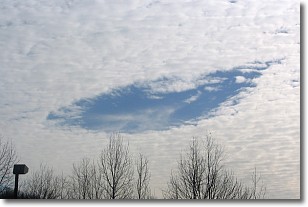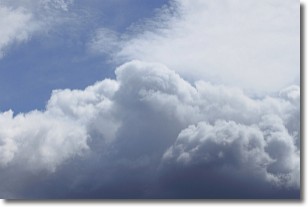Weather Alert in Washington
Special Weather Statement issued July 30 at 1:52AM PDT by NWS Seattle WA
AREAS AFFECTED: San Juan County; Lowlands of Western Whatcom County; Lowlands of Western Skagit and Northwestern Snohomish Counties; Port Townsend Area; Eastern Strait of Juan de Fuca; Western Strait of Juan de Fuca; Northern Washington Coast; Grays Harbor County Coast; Island County
DESCRIPTION: ...TSUNAMI WATCH IS IN EFFECT FOR THE WASHINGTON COAST AND STRAIT OF JUAN DE FUCA... * UPDATES...The initial tsunami waves have arrived at the Washington coast and Strait of Juan de Fuca. * LOCAL IMPACTS...A tsunami capable of producing strong currents that may be hazardous to swimmers, boats, and coastal structures is expected. Widespread inundation is NOT expected. * RECOMMENDED ACTIONS...If you are located in this coastal area, stay alert for further updates, as well as instructions from your local emergency officials. * OBSERVED TSUNAMI WAVE HEIGHTS FROM EARLIER... La Push Washington 0.6 ft Tsunamis often arrive as a series of waves or surges which could be dangerous for many hours after the first wave arrival. The first tsunami wave or surge may not be the highest in the series. * PRELIMINARY EARTHQUAKE INFORMATION... An earthquake occurred with a preliminary magnitude of 8.8. * TIDE INFORMATION... Neah Bay...Low tide of 1.3 ft at 958 AM PDT on Jul 30. High tide of 6.9 ft at 438 PM PDT on Jul 30. La Push...Low tide of 0.9 ft at 943 AM PDT on Jul 30. High tide of 7.4 ft at 415 PM PDT on Jul 30. Westport...Low tide of 1.2 ft at 956 AM PDT on Jul 30. High tide of 8.0 ft at 435 PM PDT on Jul 30. Port Angeles...Low tide of 2.2 ft at 1153 AM PDT on Jul 30. High tide of 6.4 ft at 651 PM PDT on Jul 30. Port Townsend...Low tide of 2.8 ft at 118 PM PDT on Jul 30. High tide of 8.2 ft at 811 PM PDT on Jul 30. Friday Harbor...Low tide of 2.7 ft at 147 PM PDT on Jul 30. High tide of 7.4 ft at 853 PM PDT on Jul 30. Seattle...Low tide of 3.4 ft at 214 PM PDT on Jul 30. High tide of 11.1 ft at 849 PM PDT on Jul 30. Tacoma...Low tide of 3.4 ft at 215 PM PDT on Jul 30. High tide of 11.5 ft at 852 PM PDT on Jul 30. This product will be updated as new information becomes available. Stay tuned to your local news source and NOAA weather radio for further information and updates.
INSTRUCTION: N/A
Want more detail? Get the Complete 7 Day and Night Detailed Forecast!
Current U.S. National Radar--Current
The Current National Weather Radar is shown below with a UTC Time (subtract 5 hours from UTC to get Eastern Time).

National Weather Forecast--Current
The Current National Weather Forecast and National Weather Map are shown below.

National Weather Forecast for Tomorrow
Tomorrow National Weather Forecast and Tomorrow National Weather Map are show below.

North America Water Vapor (Moisture)
This map shows recent moisture content over North America. Bright and colored areas show high moisture (ie, clouds); brown indicates very little moisture present; black indicates no moisture.

Weather Topic: What are Hole Punch Clouds?
Home - Education - Cloud Types - Hole Punch Clouds
 Next Topic: Mammatus Clouds
Next Topic: Mammatus Clouds
A hole punch cloud is an unusual occurrence when a disk-shaped
hole appears in a cirrostratus, cirrocumulus, or altocumulus cloud.
When part of the cloud forms ice crystals, water droplets in the surrounding area
of the cloud evaporate. The effect of this process produces a large elliptical
gap in the cloud. The hole punch cloud formation is rare, but it is not specific
to any geographic area.
Other names which have been used to describe this phenomena include fallstreak hole,
skypunch, and cloud hole.
Next Topic: Mammatus Clouds
Weather Topic: What are Nimbostratus Clouds?
Home - Education - Cloud Types - Nimbostratus Clouds
 Next Topic: Precipitation
Next Topic: Precipitation
A nimbostratus cloud is similar to a stratus cloud in its formless,
smooth appearance. However, a nimbostratus cloud is darker than a stratus cloud,
because it is thicker.
Unlike a stratus cloud, a nimbostratus cloud typically brings with it the threat
of moderate to heavy precipitation. In some cases, the precipitation may evaporate
before reaching the ground, a phenomenon known as virga.
Next Topic: Precipitation
Current conditions powered by WeatherAPI.com




